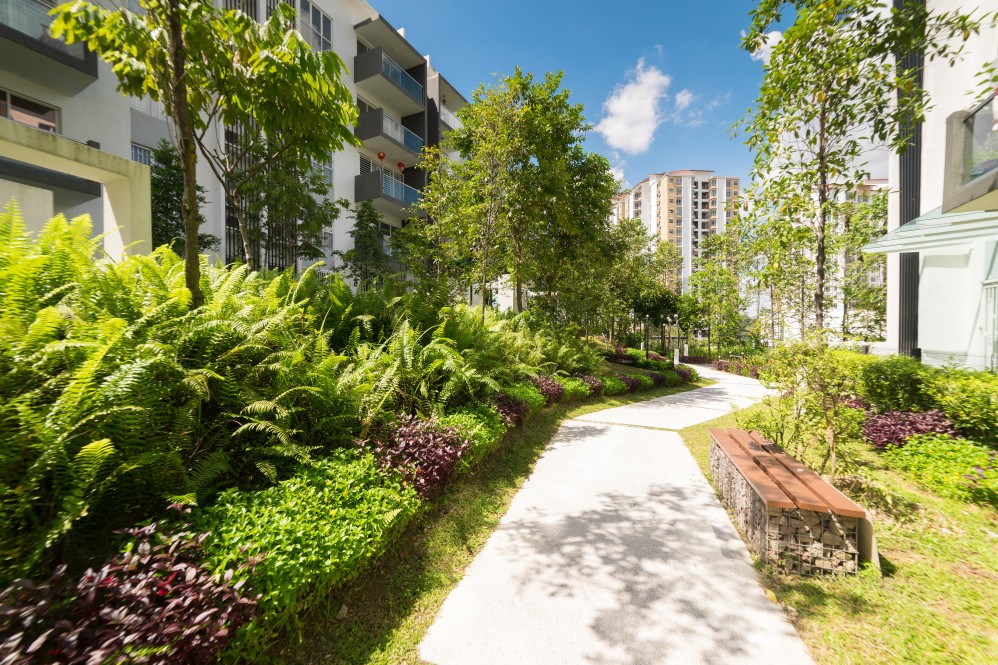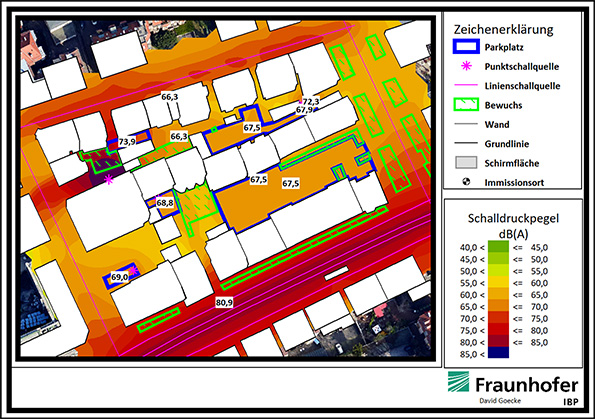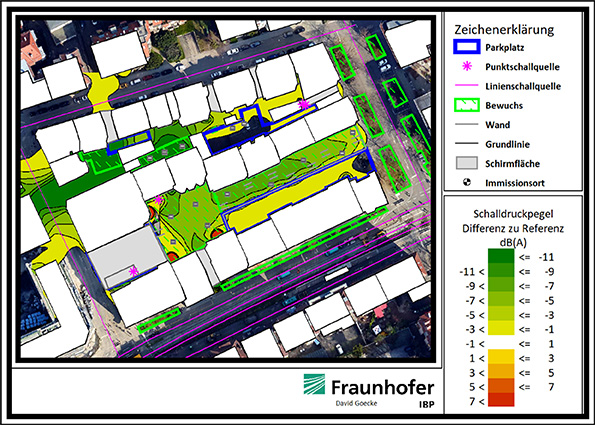In building ensembles and especially urban canyons, which take up a considerable amount of urban space as mobility areas, reducing traffic noise without significantly restricting mobility at the same time seems to be quite a challenge these days. Conflicts of this kind were one of the main reasons behind the symposium “Acoustic Urban Design”. A hitherto neglected scope for solutions to reduce noise levels can be found in courtyards, which are enclosed by buildings on all sides and thus shielded from general road traffic. However, traffic noise still reaches the courtyard via openings and passages, and the mostly reverberant surfaces cause multiple echoes and amplify everyday noise.
Courting tranquility - Acoustics in courtyards
Project goals
With the aim of generally upgrading inner courtyards, this project focuses on acoustic properties and functions in order to increase their usage value and make them nicer places to spend time in. A neighborhood in Stuttgart serves as an example for developing concepts and concrete implementation options. Supported by on-site baseline measurements, theoretical considerations and acoustic simulations are included in the solution finding process. The core of the approach is the acoustic yet multifunctional design of building components and surfaces in terms of building physics, which take into account the latest results and developments from the project focus “Building Physics of Urban Surfaces”. Innovative examples include sound-absorbing façade cladding, which also contributes to improving the energy-efficiency of buildings. High priority is given to the extensive greening of surfaces with its overall positive influence.
Current project status
The results of the project show which concepts help to generally reduce noise in inner courtyards and how they can be combined to create urban recreation areas with a natural character. The comparatively simple and inexpensive installation of sound-absorbing materials on the underside of balconies is just one example. Typical for such courtyards is the noise due to vehicles moving in and out of parking lots. If, for instance, a courtyard cannot be converted to a green space, (low) noise barriers and absorbent surfaces can be used to reduce noise levels. Screened roof surfaces, passageways cladded with sound-absorbing materials and noise barriers in front of passageways all help to lessen the amount of traffic noise penetrating into the inner courtyard. All in all, the project was able to consider numerous starting points and promising measures for reducing noise in inner courtyards and prove their effectiveness in realistic simulations.


